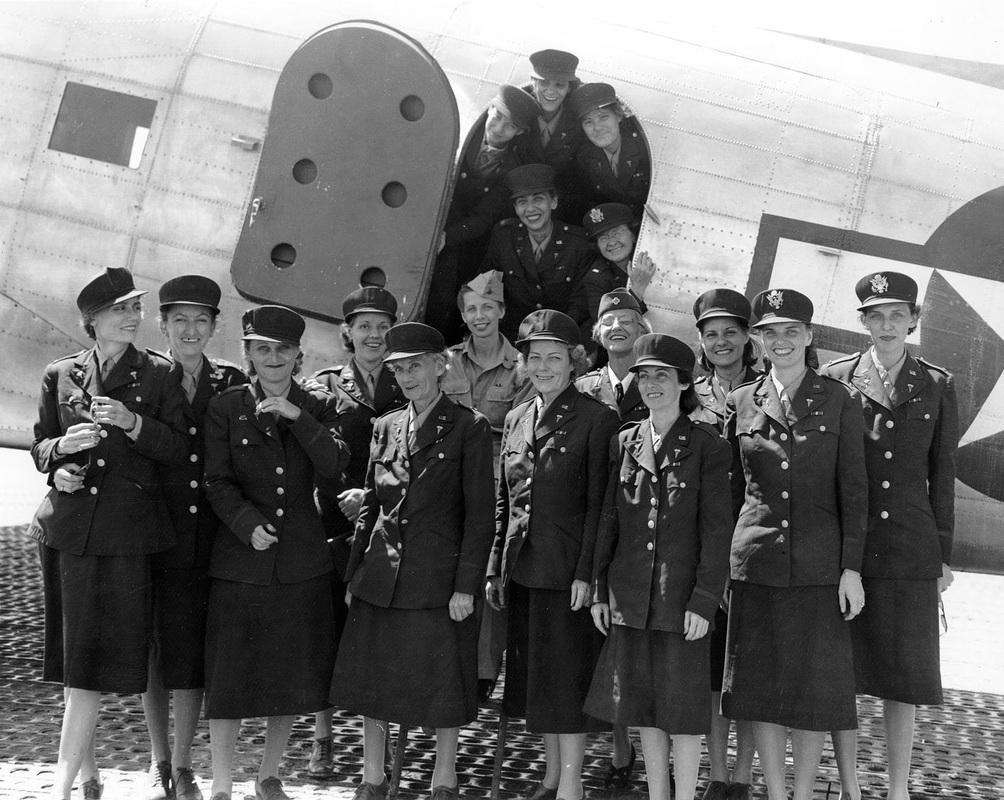 One of the best things about having a published book out there in the world is the way in which it connects me to strangers and their stories. Here's a few words from an e-mail I received two weeks ago about an American flight nurse that served in the Pacific in World War II. "Charlotte McFall Mallon is 97 now....last time I visited her she showed me your book, Pure Grit, that a niece had sent her. She said she cried while reading it." Charlotte tells of her personal connect to the POW nurses in her own words in the book, NO TIME FOR FEAR, by Dianne Burke Fessler. One day I was in Saipan, waiting for patients to come in from various places, when the chief nurse came into the barracks and asked us to get all the fresh food, fruit or anything we could find. She told us we were going to put on a buffet, and we couldn't imagine what could be happening because our food was so awful. She wouldn't tell us why, so we guessed that some VIP was coming from Washington. All kinds of food was brought together, because everyone had been getting it sent from home. We took it to the hangar, where the mess sergeants had made potato salad, and put out all the food. We waited for the planes, and pretty soon two of them landed and taxied up to the hangers. They were not the usual evacuation planes, either, but the "plush" ones that VIPs traveled in. When the doors the doors opened, the stairs were wheeled to the planes, and the girls who had been prisoners in the Philippines came out.  Flight Nurse Charlotte McFall, center. Flight Nurse Charlotte McFall, center. I can never tell this without crying. We knew immediately who they were. They were thin as rails. They had been given uniforms, which didn't fit, and their hats were down over their noses. The band struck up The Star Spangled Banner, and there wasn't a dry eye anywhere, everybody was crying. We all greeted them, and ushered them to the buffet. The centerpiece was a sheetcake that was decorated red, white and blue, and read Welcome Home to the Good Old USA. They were thrilled to pieces. Charlotte, a nurse with the 828th Medical Air Evacuation Squadron, arrived for duty in the Pacific in October 1944. She and other flight nurses tended patients in planes that picked up wounded near the front lines. Though her plane could have been shot down over enemy territory, her closest call came during a routine landing on a short runway on the Island of Eniwetok. She explains, The nose wheel of the C-54 hit the pile of coral, flipped us over on one wing, spinning us around and the plane burst into flames. Another nurse, Mary Creel, and I jumped out through the flames. I escaped burns, but sprained my ankle, while the other nurses, crew and some of the passengers were injured worse. Mary and Georgia Dixen suffered burns. Courtesy NO TIME FOR FEAR, by Dianne Burke Fessler I'd been asked to carry some secret papers to Tinian on that flight, which we weren't supposed to do, and had to be concerned about that, as well as helping the people who were injured. Tinian Island was the departure point of the bombers Enola Gay and Bockscar, carrying the atomic bombs named Little Boy and Fat Man that were dropped on Hiroshima and Nagasaki. Comments are closed.
|
I'm fascinated to discover little-known history, stories of people and events that provide a new perspective on why and how things happened, new voices that haven't been heard, insight into how the past brought us here today, and how it might guide us to a better future.
I also post here about my books and feature other authors and their books on compelling and important historical topics. Occasionally, I share what makes me happy, pictures of my garden, recipes I've made, events I've attended, people I've met. I'm always happy to hear from readers in the blog comments, by email or social media. Archives
September 2023
Categories
All
|

